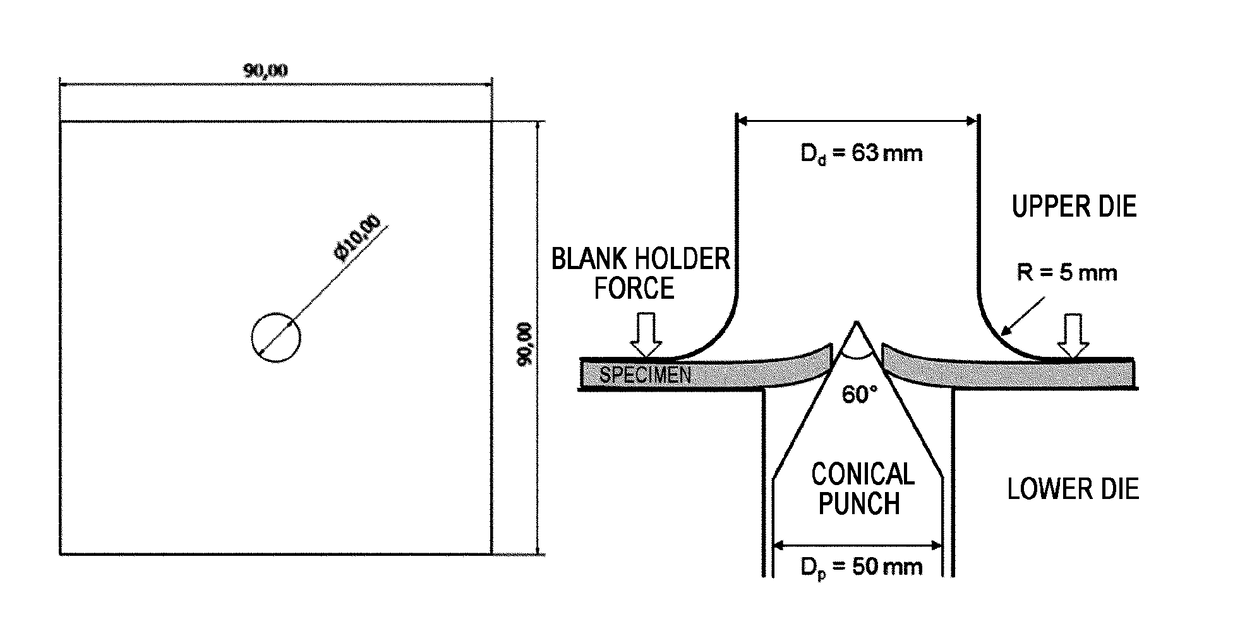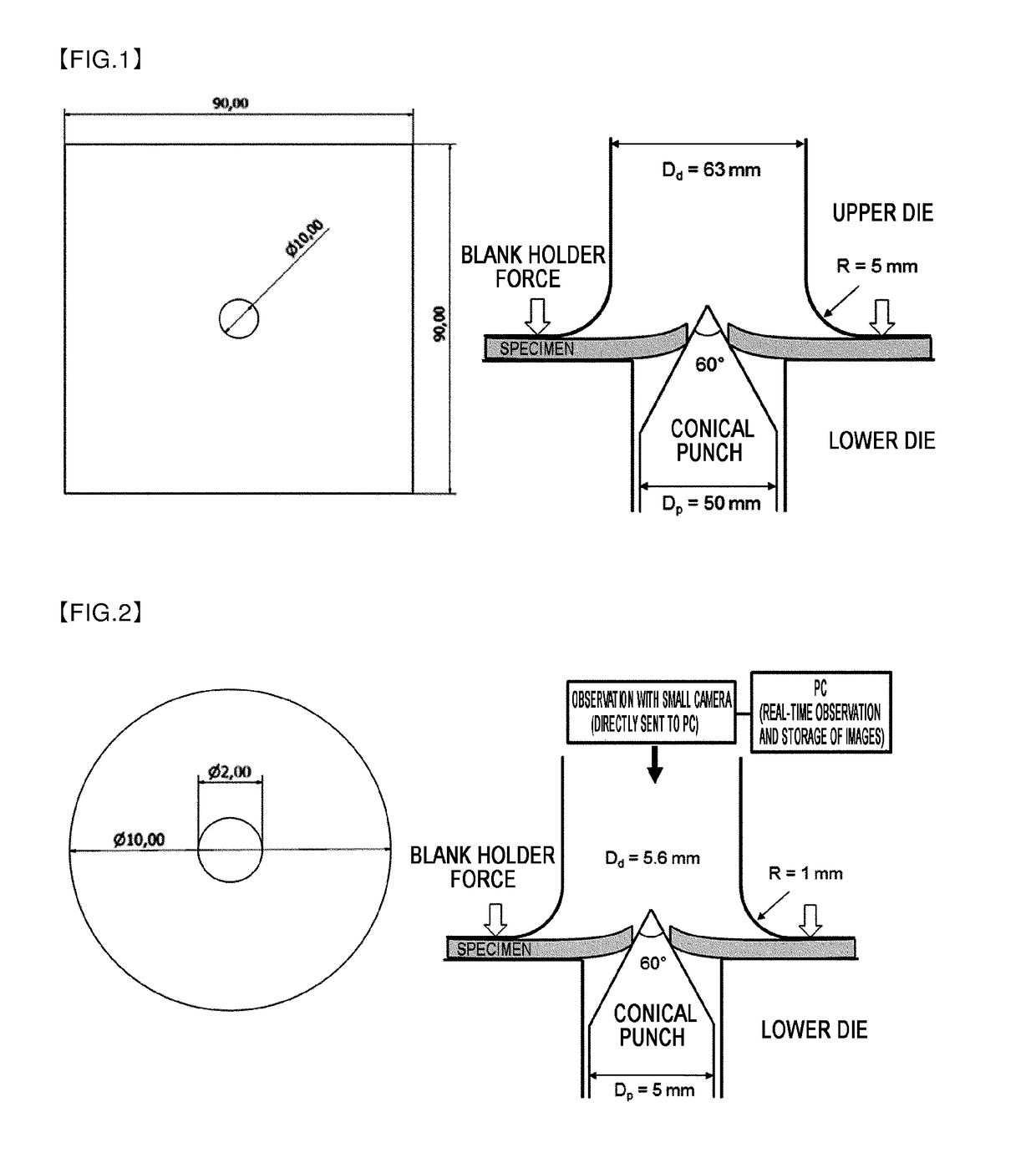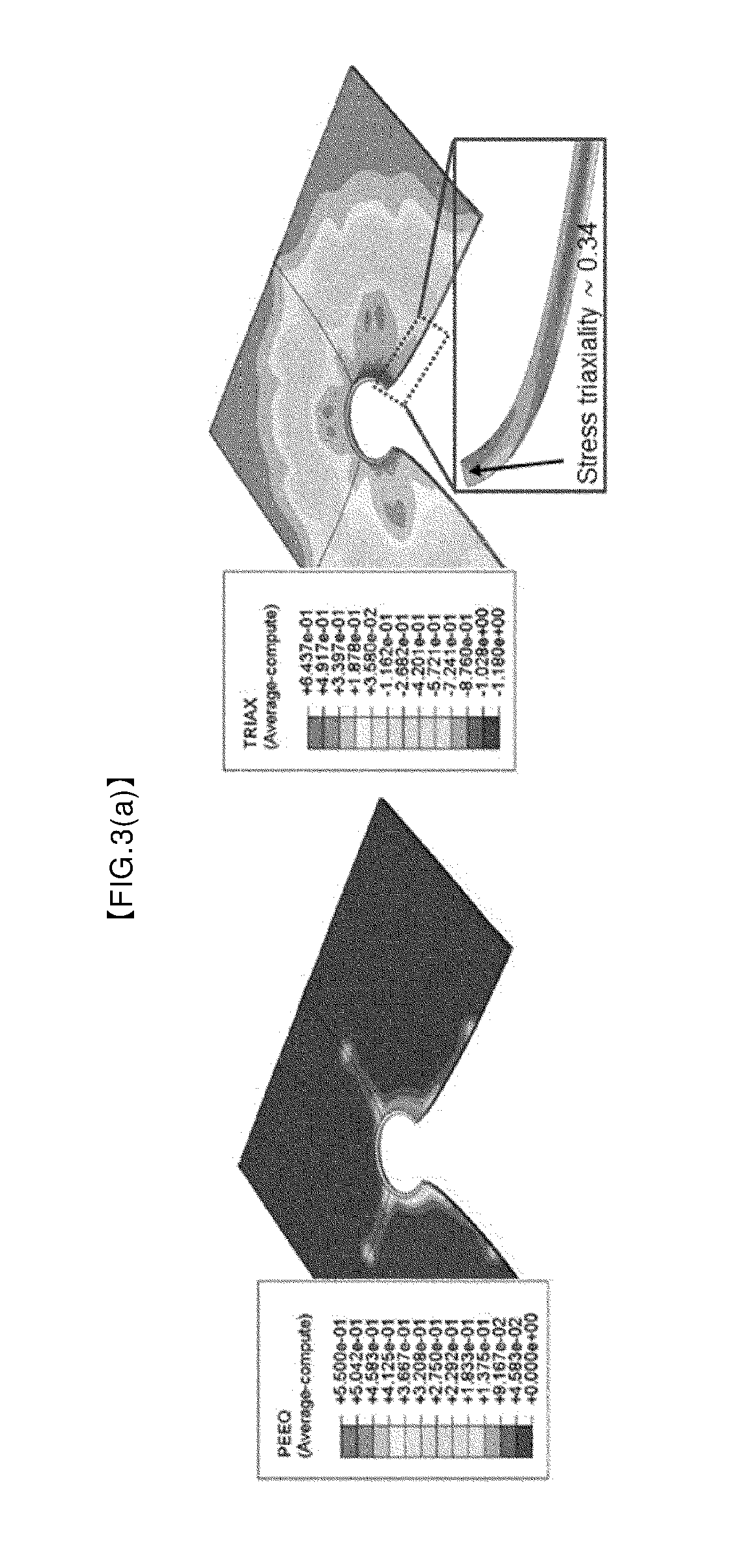Method of evaluating stretch-flangeability with small-scale specimen without specimen size effects
- Summary
- Abstract
- Description
- Claims
- Application Information
AI Technical Summary
Benefits of technology
Problems solved by technology
Method used
Image
Examples
Embodiment Construction
[0031]Hereinafter, a method of stretch-flangeability with a small-scale specimen without specimen size effects according to a preferred embodiment of the invention will be described in detail with reference to the accompanying drawings, but the embodiment is not limited to the following examples. Therefore, it is obvious that the present invention may be modified in various forms within the scope without departing from the technical idea of the present invention by those skilled in the art.
[0032]FIG. 1 is an illustrative view illustrating a specimen and an evaluation mold for evaluating the stretch-flangeability of a sheet metal material through a hole expansion test according to the ISO 16630 international standard (in the drawing, Dd: inner diameter of a mold in the hole expansion test, Dp: diameter of a punch in the hole expansion test). As described in FIG. 1, a standard-scale specimen is large in size and requires large amounts of material in order to perform the test.
[0033]In ...
PUM
 Login to view more
Login to view more Abstract
Description
Claims
Application Information
 Login to view more
Login to view more - R&D Engineer
- R&D Manager
- IP Professional
- Industry Leading Data Capabilities
- Powerful AI technology
- Patent DNA Extraction
Browse by: Latest US Patents, China's latest patents, Technical Efficacy Thesaurus, Application Domain, Technology Topic.
© 2024 PatSnap. All rights reserved.Legal|Privacy policy|Modern Slavery Act Transparency Statement|Sitemap



